
How to Use BOSCH BMV080 Particle Sensor: Examples, Pinouts, and Specs
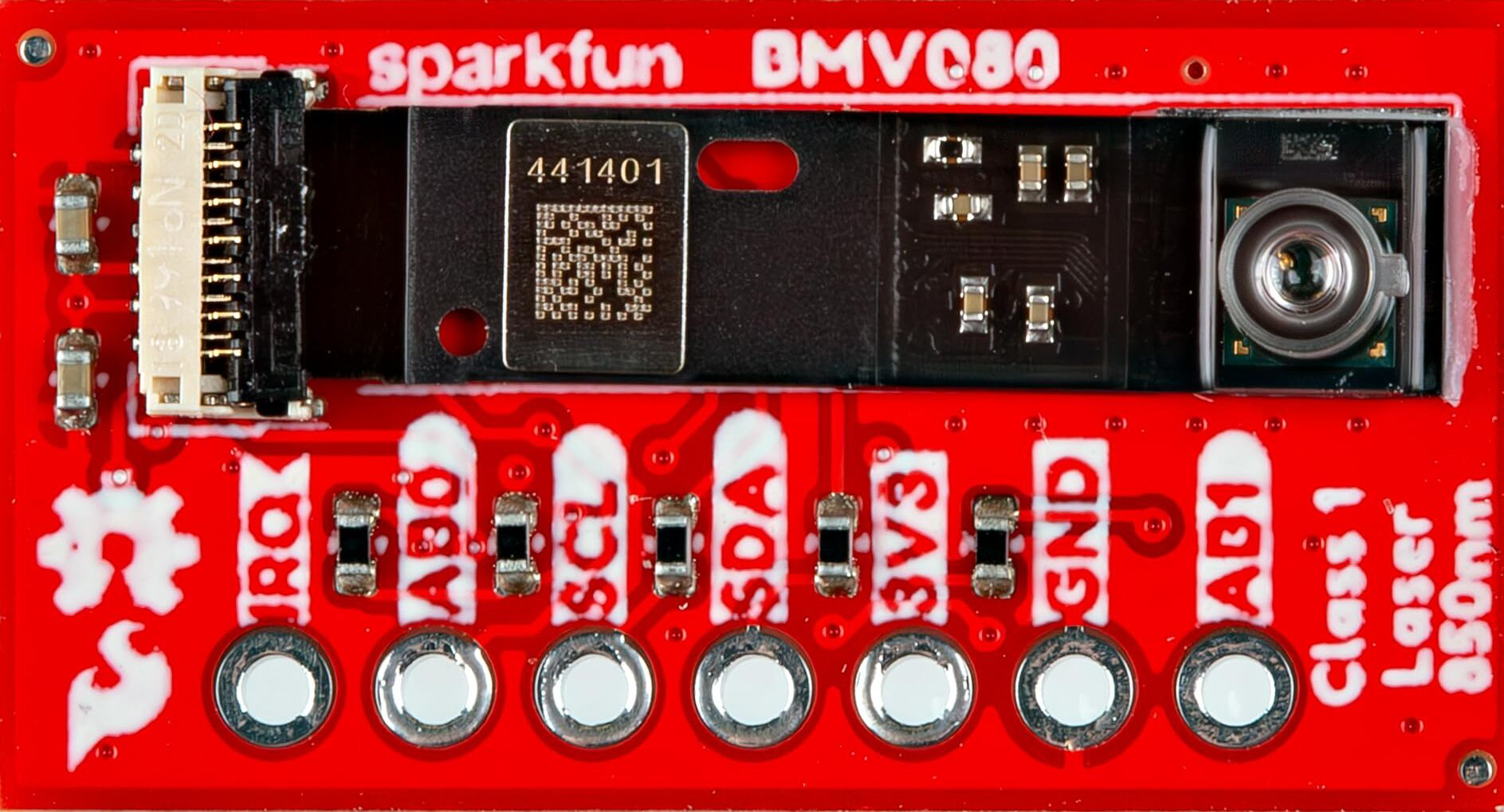
 Design with BOSCH BMV080 Particle Sensor in Cirkit Designer
Design with BOSCH BMV080 Particle Sensor in Cirkit DesignerIntroduction
The BOSCH BMV080 is a compact and highly accurate air quality sensor designed to detect particulate matter (PM) in the air. It provides real-time data on air pollution levels, making it ideal for applications such as air purifiers, HVAC systems, smart home devices, and environmental monitoring systems. The sensor is capable of detecting fine particles, including PM2.5 and PM10, which are critical indicators of air quality.
Explore Projects Built with BOSCH BMV080 Particle Sensor
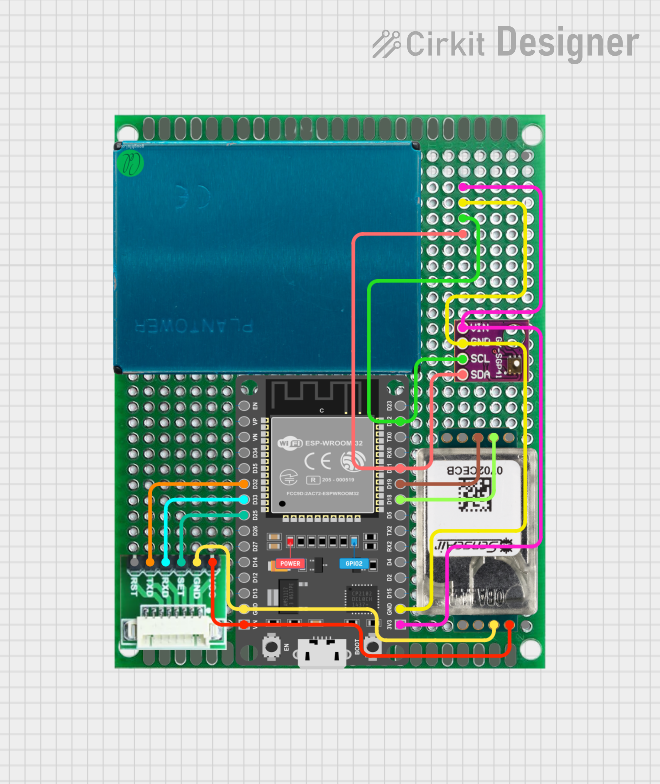
 Open Project in Cirkit Designer
Open Project in Cirkit Designer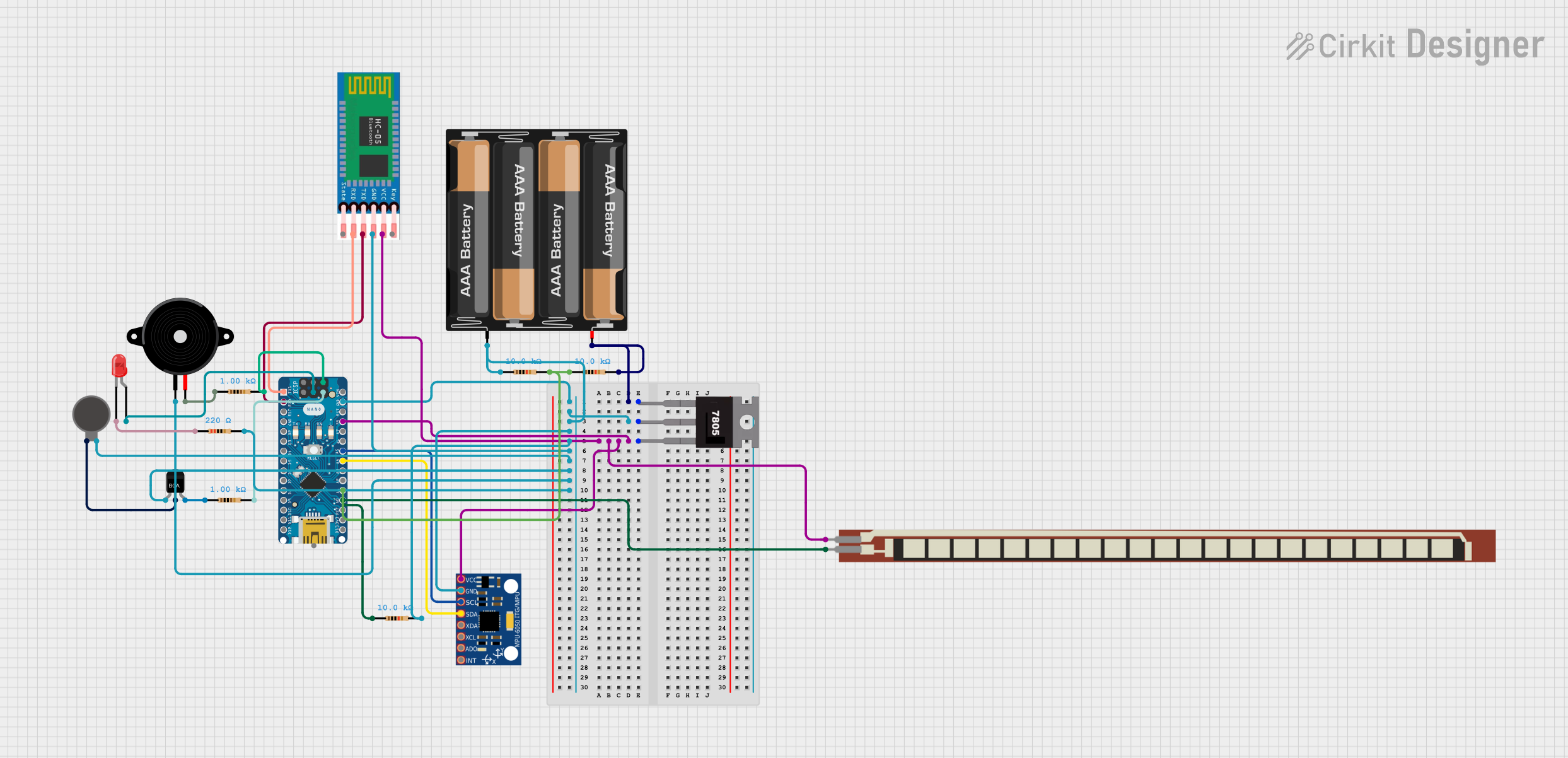
 Open Project in Cirkit Designer
Open Project in Cirkit Designer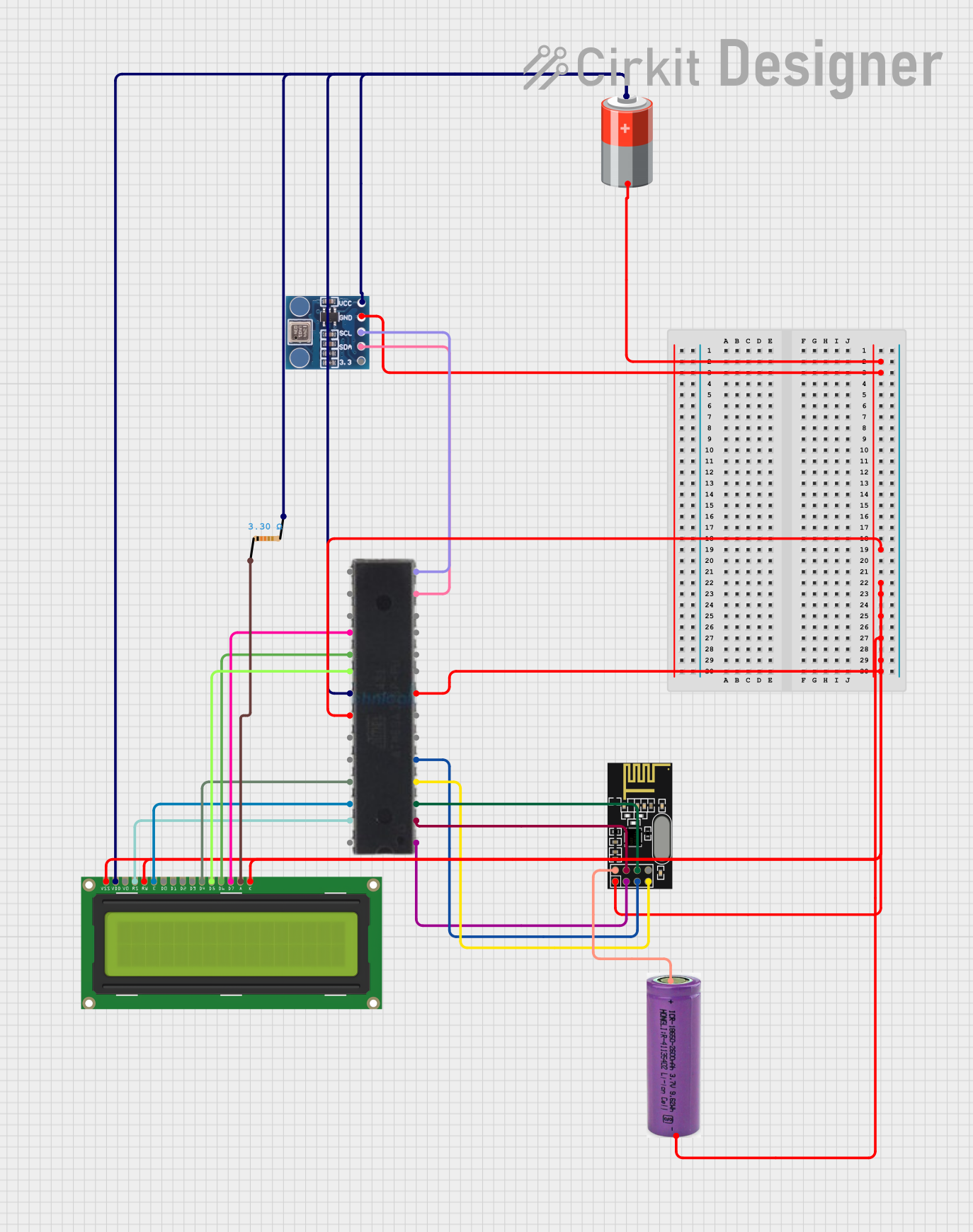
 Open Project in Cirkit Designer
Open Project in Cirkit Designer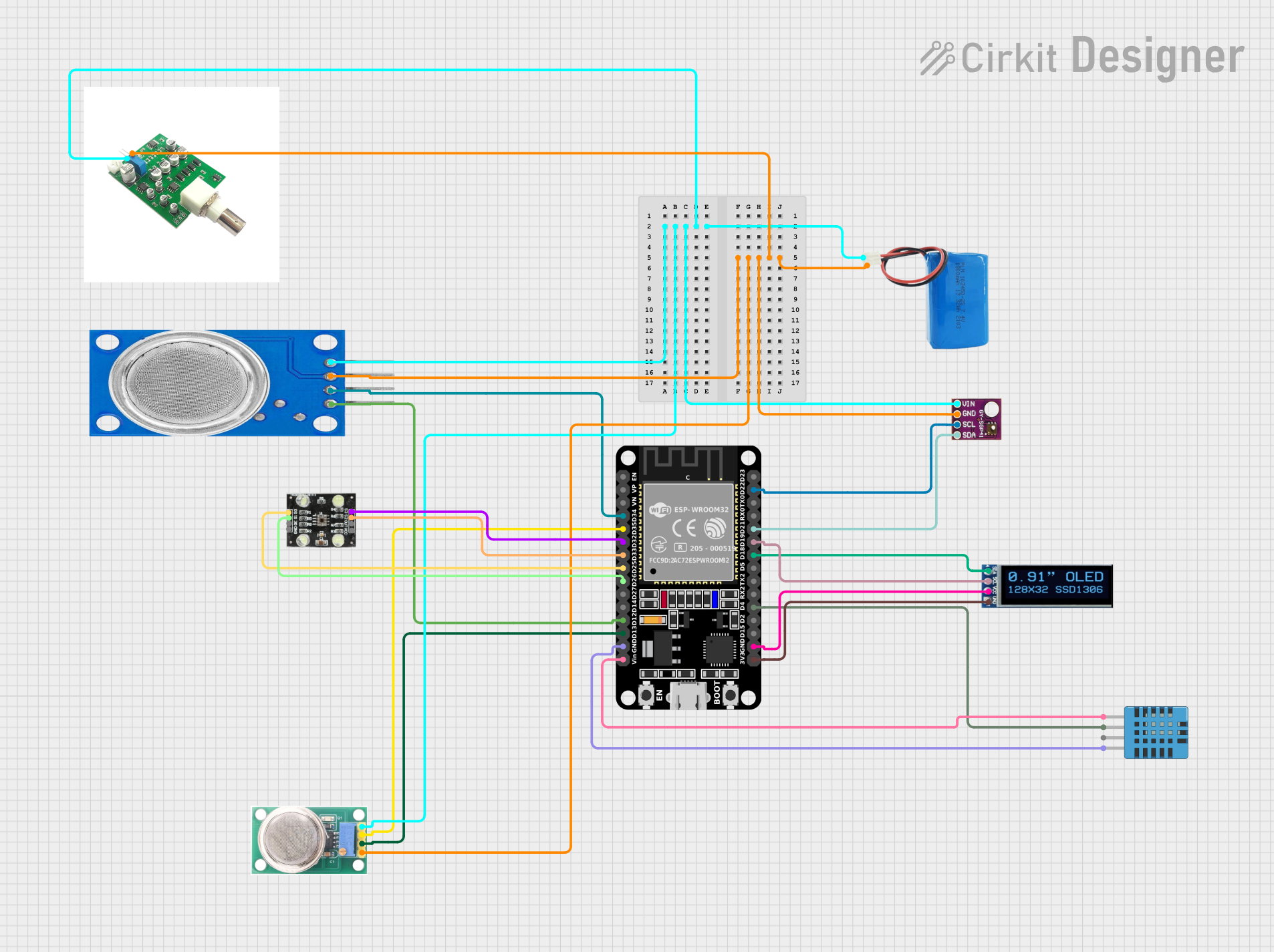
 Open Project in Cirkit Designer
Open Project in Cirkit DesignerExplore Projects Built with BOSCH BMV080 Particle Sensor

 Open Project in Cirkit Designer
Open Project in Cirkit Designer
 Open Project in Cirkit Designer
Open Project in Cirkit Designer
 Open Project in Cirkit Designer
Open Project in Cirkit Designer
 Open Project in Cirkit Designer
Open Project in Cirkit DesignerCommon Applications and Use Cases
- Air purifiers and air quality monitors
- HVAC systems for smart buildings
- IoT-based environmental monitoring
- Wearable air quality devices
- Industrial and outdoor air quality measurement
Technical Specifications
The BMV080 is designed for low power consumption and high precision, making it suitable for battery-powered and compact devices. Below are the key technical details:
Key Technical Details
| Parameter | Value |
|---|---|
| Supply Voltage | 3.3V to 5.0V |
| Operating Current | 15 mA (typical) |
| Standby Current | < 1 mA |
| Particle Size Detection | PM1.0, PM2.5, PM10 |
| Measurement Range | 0 to 1,000 µg/m³ |
| Communication Interface | I²C, UART |
| Operating Temperature | -10°C to +60°C |
| Dimensions | 30 mm x 20 mm x 10 mm |
Pin Configuration and Descriptions
The BMV080 has a simple pinout for easy integration into various systems. Below is the pin configuration:
| Pin Number | Pin Name | Description |
|---|---|---|
| 1 | VCC | Power supply input (3.3V to 5.0V) |
| 2 | GND | Ground |
| 3 | SDA | I²C data line or UART TX |
| 4 | SCL | I²C clock line or UART RX |
| 5 | INT | Interrupt pin for data-ready signal (optional) |
Usage Instructions
The BMV080 is straightforward to use in a circuit. It supports both I²C and UART communication protocols, allowing flexibility in interfacing with microcontrollers like the Arduino UNO.
Steps to Use the BMV080
- Power the Sensor: Connect the VCC pin to a 3.3V or 5.0V power source and the GND pin to ground.
- Choose Communication Protocol: Decide whether to use I²C or UART. For I²C, connect the SDA and SCL pins to the corresponding pins on your microcontroller. For UART, connect SDA to TX and SCL to RX.
- Initialize Communication: Configure your microcontroller to communicate with the sensor using the chosen protocol.
- Read Data: Use the appropriate commands to read PM1.0, PM2.5, and PM10 values from the sensor.
- Process Data: Convert the raw data into meaningful air quality metrics for your application.
Important Considerations and Best Practices
- Power Supply: Ensure a stable power supply to avoid measurement inaccuracies.
- Placement: Place the sensor in an area with good airflow for accurate readings.
- Avoid Contamination: Keep the sensor away from dust and debris to maintain long-term accuracy.
- Protocol Selection: Use I²C for short-distance communication and UART for longer distances.
Example Code for Arduino UNO (I²C)
Below is an example of how to interface the BMV080 with an Arduino UNO using the I²C protocol:
#include <Wire.h>
// BMV080 I²C address
#define BMV080_I2C_ADDR 0x76
void setup() {
Serial.begin(9600); // Initialize serial communication for debugging
Wire.begin(); // Initialize I²C communication
// Check sensor connection
Wire.beginTransmission(BMV080_I2C_ADDR);
if (Wire.endTransmission() == 0) {
Serial.println("BMV080 connected successfully!");
} else {
Serial.println("Failed to connect to BMV080.");
while (1); // Halt execution if sensor is not detected
}
}
void loop() {
// Request data from the sensor
Wire.beginTransmission(BMV080_I2C_ADDR);
Wire.write(0x00); // Command to read PM data (example command)
Wire.endTransmission();
Wire.requestFrom(BMV080_I2C_ADDR, 6); // Request 6 bytes of data
if (Wire.available() == 6) {
uint16_t pm1_0 = (Wire.read() << 8) | Wire.read(); // PM1.0 value
uint16_t pm2_5 = (Wire.read() << 8) | Wire.read(); // PM2.5 value
uint16_t pm10 = (Wire.read() << 8) | Wire.read(); // PM10 value
// Print the values to the serial monitor
Serial.print("PM1.0: ");
Serial.print(pm1_0);
Serial.print(" µg/m³, PM2.5: ");
Serial.print(pm2_5);
Serial.print(" µg/m³, PM10: ");
Serial.print(pm10);
Serial.println(" µg/m³");
} else {
Serial.println("Failed to read data from BMV080.");
}
delay(1000); // Wait 1 second before the next reading
}
Troubleshooting and FAQs
Common Issues and Solutions
Sensor Not Detected:
- Cause: Incorrect wiring or power supply.
- Solution: Double-check the connections and ensure the sensor is powered correctly.
Inaccurate Readings:
- Cause: Poor placement or contamination.
- Solution: Place the sensor in a well-ventilated area and clean it periodically.
Communication Errors:
- Cause: Incorrect I²C address or protocol mismatch.
- Solution: Verify the I²C address and ensure the microcontroller is configured for the correct protocol.
FAQs
Q: Can the BMV080 detect gases like CO2 or VOCs?
A: No, the BMV080 is specifically designed to detect particulate matter (PM1.0, PM2.5, PM10). For gas detection, consider using a dedicated gas sensor.
Q: Is the BMV080 suitable for outdoor use?
A: Yes, but it should be housed in a protective enclosure to shield it from extreme weather conditions and direct exposure to contaminants.
Q: Can I use the BMV080 with a 5V microcontroller?
A: Yes, the BMV080 supports a supply voltage range of 3.3V to 5.0V, making it compatible with both 3.3V and 5V systems.